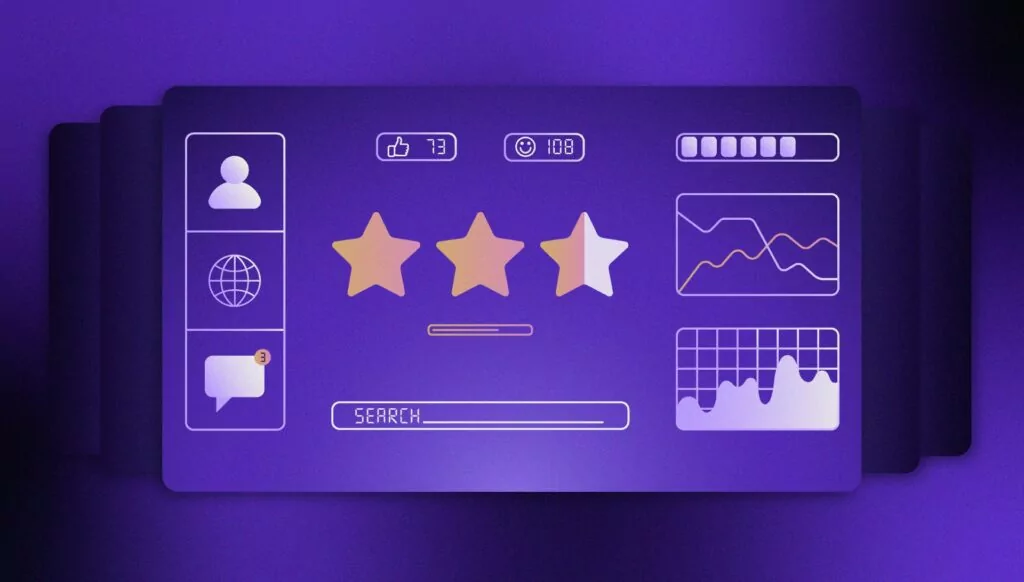How does Flutter compare with other mobile app development options?
In the previous blog we spoke about how Flutter has made it simple for developers of all levels to develop amazing applications for different situations. Many programming languages claim advantages of their own, so what sets Flutter apart? In this blog, we will compare Flutter with the other options available to developers.
Flutter vs. React Native
React Native is considered one of the closest competitors of Flutter. Like Flutter, React Native is a cross-platform app development platform and is open-sourced. Both are cost-effective options and time-savers as they offer the hot reload feature to innovate on-the-go. But that’s where the similarities end.
Flutter provides a rich source of widgets that enable developers to build great-looking apps. It has an active community base and excellent documentation that allows even an entry-level developer to start developing. Unlike the widgets that Flutter uses, React Native uses bridge and native elements, so developers require separate optimization for each platform. This impacts their time-to-market speed. In a fast-paced environment where innovations occur daily, this can be a downer for developers.
Flutter vs. Native
The primary reason why developers prefer Flutter over Native iOS or Android is that it allows developers to use one codebase for both platforms. Companies don’t have to hire or build a separate development team for iOS or Android apps resulting in fewer errors or bugs since consistency is maintained across both the platforms. However, Flutter has limitations too.
As Flutter’s infrastructure is a superstructure over the native infrastructure, it can be less stable; it cannot naturally replace Native’s infrastructure. Similarly, not all Flutter plugins are completely stable. So, even if some native functionalities work on Flutter using plugins, the choice is limited. 2-5% of developers who only know Android/Flutter or iOS/Flutter might need time to understand the workings of the second native platform. Despite these limitations, developers have found Flutter to be convenient and cost-effective as compared to Native iOS and Android.
Flutter vs. Angular
The biggest differentiator between Flutter and Angular is the usage of the codebase. Flutter developers use a single codebase and Angular’s codebase is platform-specific. With Angular, developers have to create the app from scratch for different platforms. This is one of the leading reasons why developers prefer Flutter over Angular.
Angular is also less cost-effective for this reason. Angular developers depend excessively on native developers to integrate each version of their Angular content into mobile projects. For example, if the development team for Flutter requires just one developer, the Angular team may require three of them – a full-time Angular developer and two part-time native developers. This results in creating multiple repositories that Angular developers may find cumbersome to maintain and may slow down the progress of the project.
The migration to a newer version of Angular is also more complex than migration in Flutter. If an Angular developer migrates from version 1 to version 7, they have to redesign the app and rework the code from scratch. Features like hot reload spares the Flutter developers from such complexities. Of course, despite the limitations of Angular and the growing popularity of Flutter, the apps made using Angular are extremely stable and are still preferred by some developers.
Flutter vs. PWA
Apps built using Progressive Web Apps (PWA) are compatible with all browsers. They work on low internet connectivity and offline, and PWA updates itself automatically, which keeps the apps also updated. However, PWA does not allow unauthorized users to access content as the apps are served by HTTPS.
Unlike Flutter-based apps, installation is not easy. Users have to go to the website to install the app and launch it, which limits the user experience. Although PWA apps are compatible with iOS and Android, they do not provide the native experience that Flutter offers due to a lack of native mobile libraries. If the objective is to provide a superior experience to users, Flutter would be a better choice for the discerning mobile app developer.
Conclusion
All things considered, Flutter remains one of the most searched technologies among mobile app developers. However, the determining factor to choose Flutter is the objective the app is trying to achieve.
Here are a few situations where Flutter would be an ideal solution.
- If a company does not have enough budget to create native apps for both the platforms but still wants to launch iOS and Android apps.
- If a company wants to develop and launch products within a short period of time.
- If a company wants the ability to innovate on-the-go without disrupting the user experience on the application.
- If a company has more beginner-level app developers, but who are willing to learn Dart language to create apps within a short time.
At Windmill, Flutter allows developers to work quickly and efficiently.
Matt Galligan, Co-founder of Circa said, “In my opinion, the future of mobile is the future of everything.” It would seem that mobile app developers eager to create that future are turning to Flutter in ever-growing numbers. Are you?




